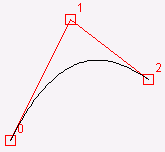Characterised by a large bulbous pistol grip and its unusually positioned cylinder Shaw’s pistol looks nothing like its contemporaries.
Shaw first developed his… pocket pistol which had no danger of its hammer snagging on clothing and preventing accidental discharges. His solution was to place the pistol’s hammer is inside its stubby grip.
…the pistol is made safer by protecting the percussion caps themselves by what Shaw describes as a ‘recoil shield’ meaning that “no accidental discharge can occur by the percussion of extraneous bodies in fire-arms of this construction.” This was also a feature not commonly found on contemporary pistols.

He combined the pistol’s centre cylinder pin with an extendable brass tube sight which could be retracted backwards towards the user. This extended the pistol’s sight radius with the user actually sighting along the tube through the pistol.
With no hammer visible it is natural to assume that the pistol used a double action mechanism to cock and fire the pistol with a single trigger pull. However, it is actually actuated by a set of two triggers, the prominent first trigger indexes the cylinder and cocks the hammer while the second trigger, below the first, which can either be used a hair-trigger or be tripped by pulling the first trigger all the way back releasing the hammer…
The example photographed is apparently the only surviving pistol although other sources suggest as many as fifty were originally produced.
https://www.historicalfirearms.info/post/98754903361/shaw-underhammer-pistol-designed-by-jacob-shaw
I’m all for bullpup revolvers.


